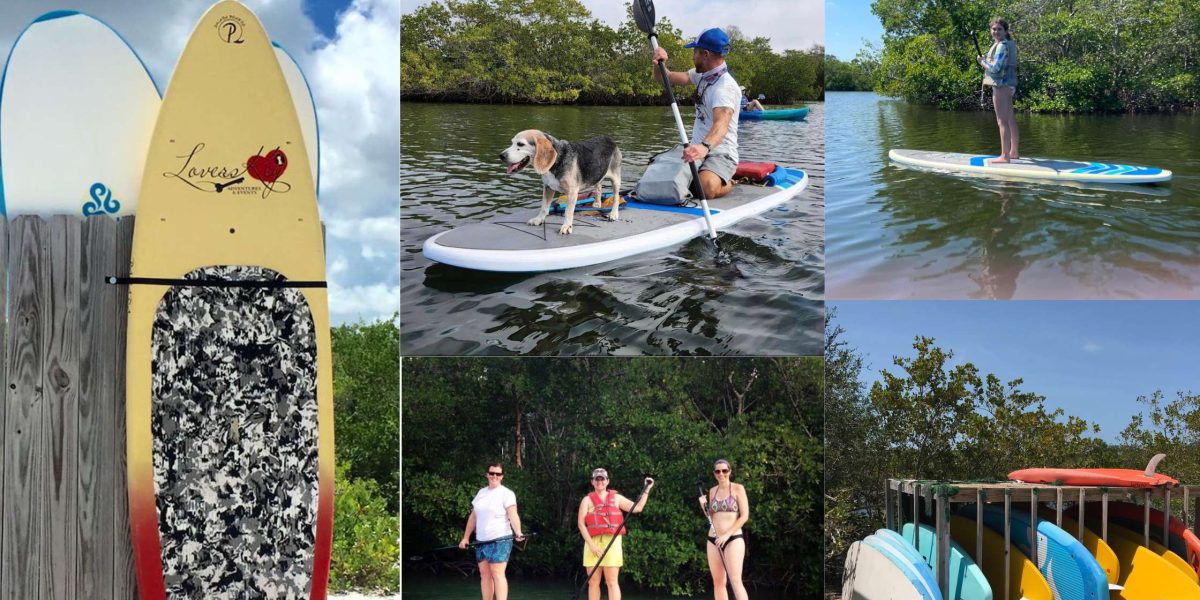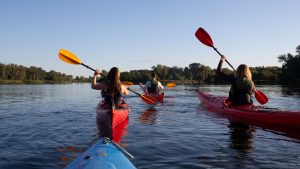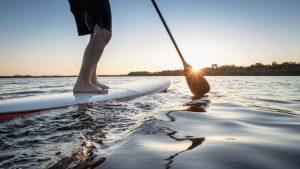Stand up paddleboarding, or SUP as the cool kids call it, is a unique blend of balance, strength, and tranquility. Whether you’re a newbie or have a bit of experience under your belt, we’ve got you covered. We’ll dish out some handy tips and techniques to help you master the art of paddleboarding like a pro.
From finding the perfect stance to nailing those paddle strokes, we’ve got all the insider info you need. So, let’s dive in and embark on this paddleboarding adventure together!
Benefits of Stand Up Paddleboarding
Discover the numerous benefits of stand-up paddleboarding, a popular water activity that offers a full-body workout and an immersive outdoor experience.
Whether you’re a beginner or an experienced paddler, stand-up paddleboarding can provide a fun and effective way to stay fit and enjoy the great outdoors.
By using your entire body to balance and propel yourself through the water, you engage muscles in your arms, shoulders, back, and core, helping to improve strength and stability.
Additionally, paddleboarding is a low-impact exercise, reducing the strain on your joints compared to other high-impact activities.
Beyond the physical benefits, paddleboarding allows you to connect with nature and explore scenic waterways, providing a sense of peace and tranquility.
Essential Gear for Stand Up Paddleboarding
To fully enjoy stand-up paddleboarding, you’ll need essential gear that ensures your safety and enhances your experience on the water.
The first and most important piece of gear is a paddleboard, which should be chosen based on your skill level and intended use.
A leash is also crucial to keep you connected to your board in case of a fall.
A personal flotation device (PFD) is necessary for safety, especially in rough waters or if you aren’t a strong swimmer.
Additionally, proper attire, such as a wetsuit or rash guard, will protect you from the sun and potential abrasions.
Lastly, don’t forget a waterproof bag or case to keep your valuables dry while you paddle.
With the right gear, you can confidently paddleboard and have a fantastic time on the water.
Proper Technique and Body Positioning
Start by positioning yourself on the paddleboard using your knees or in a kneeling position. This will help you stabilize the board and get a feel for its movement.
Once you’re comfortable, slowly stand up, placing your feet shoulder-width apart and parallel to the stringer (the center line of the board). Keep your knees slightly bent to maintain balance and absorb any movements from the water.
Engage your core muscles to maintain stability and avoid rocking side to side.
To paddle, extend your arms forward, dip the blade of the paddle into the water, and pull it back towards your body in a smooth, fluid motion. Remember to rotate your torso and engage your back muscles for a more efficient stroke.
Practice proper technique and body positioning to enhance your paddleboarding experience.
Safety Tips for Stand Up Paddleboarding
Ensure your safety while stand up paddleboarding by following these essential tips.
First and foremost, always wear a personal flotation device (PFD) while out on the water. Even if you’re a strong swimmer, unexpected circumstances can arise, and a PFD can be a lifesaver.
Additionally, be aware of your surroundings and check the weather conditions before heading out. Avoid paddling in strong winds or rough waters, as these can make it difficult to maintain balance and control.
It’s also important to stay hydrated and protect yourself from the sun by wearing sunscreen and a hat.
Finally, inform someone of your plans and estimated return time so they can alert authorities if necessary.
Choosing the Right Location for Stand Up Paddleboarding
Find the perfect location for your stand up paddleboarding adventure by considering factors such as water conditions, accessibility, and scenic views.
When choosing a location, it’s important to assess the water conditions to ensure a safe and enjoyable experience. Look for calm waters with minimal waves or currents, especially if you’re a beginner.
Accessibility is another crucial factor to consider. Choose a location that’s easily accessible, either by car or by foot, with convenient parking options nearby.
Additionally, don’t forget to take in the scenic views. Paddleboarding in a picturesque location can enhance your overall experience and provide a beautiful backdrop for your adventure.
Conclusion
Stand-up paddleboarding is a fantastic water sport that offers both beginners and experienced paddlers a range of benefits. SUP has something for everyone from improving balance and strength to providing a serene and peaceful experience on the water.
You can ensure a smooth and enjoyable paddleboarding adventure by following the proper techniques, using the essential gear, and prioritizing safety.
So, grab your board and start exploring the beautiful paddleboarding spots near you!







